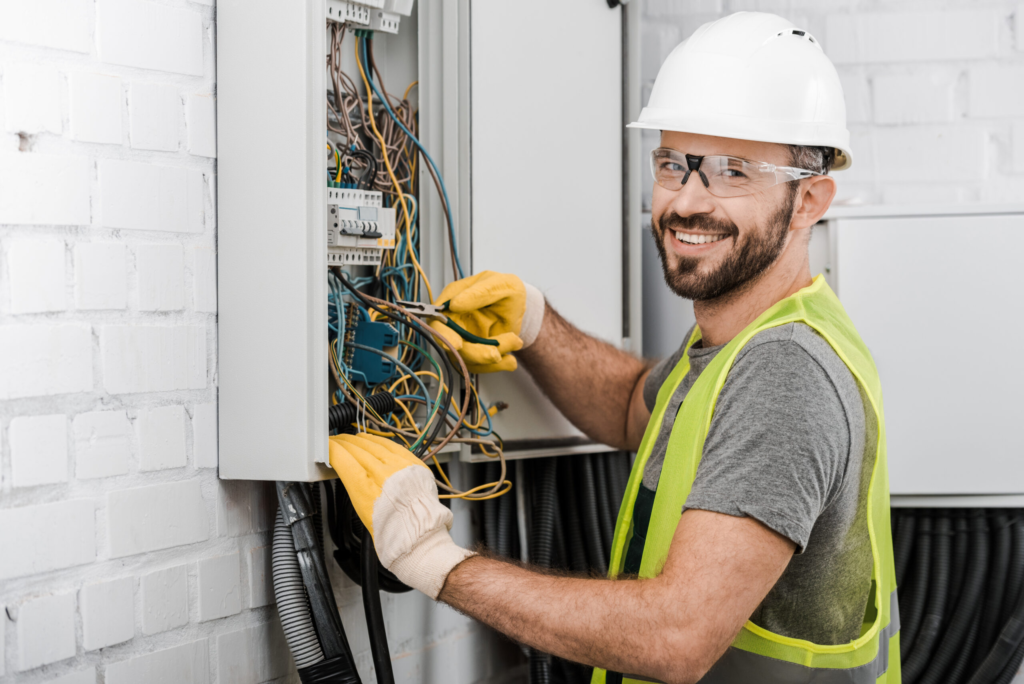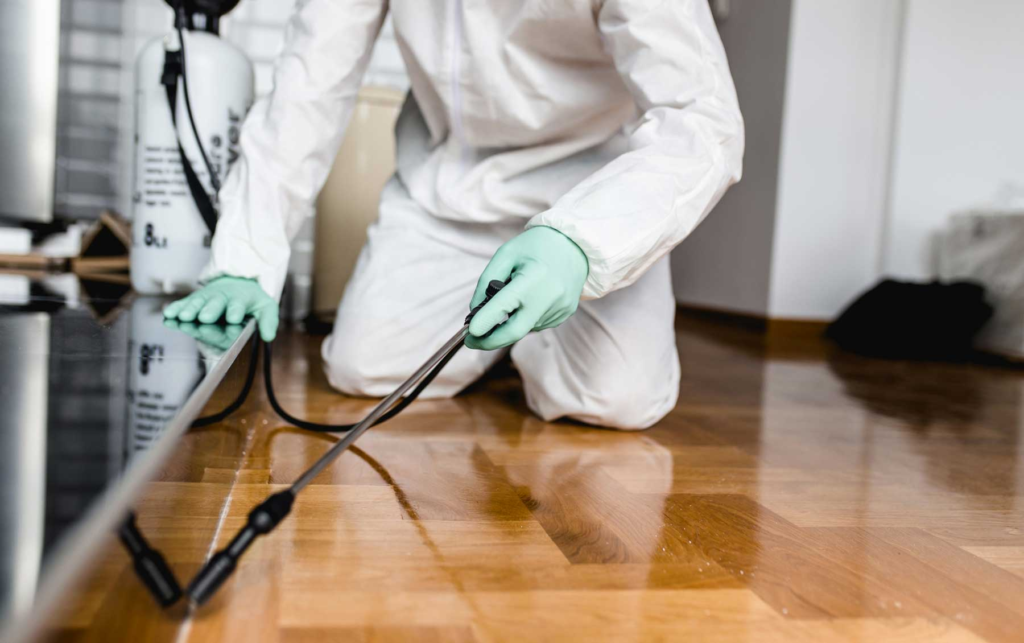An exterminator is a professional who rids buildings of unwanted pests. Their job involves:
- Inspecting sites.
- Identifying pests and their damage.
- Implementing treatment plans (including traps and chemicals).
- Offering preventative advice.
Exterminators must be willing to travel between clients’ locations and work in all weather conditions. They must also be comfortable using chemicals and wearing protective gear like gloves and goggles. Click the https://armispestmanagement.com/ to learn more.

Identifying the type of pest is an important part of an exterminator’s job. This allows them to understand what is eating or living in the structure and what steps are necessary to eradicate the problem. This information is also crucial when developing plans to keep the pests from returning in the future.
There are many different ways to identify a pest, but one of the most reliable methods is to simply look at it. However, it may be difficult to get a good look at the pest depending on its location in the home or building. In these cases, the exterminator may need to collect it in order to get a better look. This is especially useful when trying to identify insects that have six legs, such as ants or beetles. There are also arachnids that can be similar in appearance to insects, such as ticks and spiders.
Another way to identify a pest is to use a pest guide or insect identification chart. These charts have pictures of different types of pests, along with their characteristics and habits. They also describe how to identify the pest and what to do if it is found in the home or business.
Keeping accurate records of inspections, treatments and follow-up visits is an important part of an exterminator’s duties. This can include noting the type and amount of chemicals used, as well as logging the results of each treatment. This is vital when ensuring safety and compliance with pesticide regulations.
While the tasks of an exterminator are varied, most revolve around monitoring and eliminating pests from homes and businesses. This can be done by using traps, baits and sprays that are designed to kill or repel the pests. However, exterminators must be careful when using these methods to avoid harming pets or children who are in the area. In addition, they must be aware of the environmental and health risks involved in using toxic chemicals. This is why most exterminators prefer to use Integrated Pest Management strategies rather than solely relying on chemical solutions.
Treatment
As an exterminator works to kill unwanted pests and protect your home, they may use chemicals and other methods that are potentially harmful to humans. They will also work to identify and address the source of the pest problem, preventing them from coming back in the future.
During treatment, you might be asked to leave the property for a few hours depending on what is being used. In this case, the technician will inform you. Ideally, you will clean your home before an exterminator arrives to reduce the chance that cleaning will interfere with the process and ruin its effect. Be sure to put away personal items like toothbrushes and shaving razors, and empty trash cans.
It is also a good idea to pick up clutter and move furniture so that the exterminator can get to walls and corners where pests might be hiding. This will help the process run smoothly and quickly.
Before hiring an exterminator, find out how long they have been in business and what kinds of services they offer. Also, make sure they have the proper licensing to handle the chemical solutions they will be using in your home or office. It is not uncommon for these solutions to contain harsh fumigants or poisons.
Pests can be a huge problem for both homeowners and commercial properties. In New York City, for example, pest infestations are a common problem. With so many people living in a small area, pests are drawn to the warmth and safety of homes and businesses. As the weather turns cold, ants, earwigs and house crickets are more active than ever, seeking out warm places to hide. Keeping up with preventative treatments throughout the year will help ensure that pests don’t come around. Contact Western Exterminator for more information about our pest control services and PestFree365+, our year-round preventative plan.
Communication
When pests invade your home or business, you need fast, effective treatment. And you want someone who will communicate clearly and answer questions promptly. The best exterminators keep in touch with their clients throughout the process. They also provide recommendations on how to prevent future pest problems.
An exterminator’s job is to get rid of unwanted insects and rodents from homes, businesses, and public places, indoors and outdoors. They often use chemicals and other natural solutions to control and eliminate pests. Exterminators are also often called pest control experts, although they differ slightly from pest control technicians.
The difference is that while an exterminator specializes in the chemical treatments used to get rid of pests, a pest control technician has broader knowledge about how to avoid having pests in the first place. They may recommend repairing cracks and crevices, for example, to make it more difficult for pests to enter.
Both types of pest control professionals typically receive on-the-job training from their employers and must complete general safety and pesticide application classes. Then, they may receive additional specialized training. Some examples of specialized training include fumigation and bed bug and termite control. Licensing requirements vary by state.
When customers call for pest services, an exterminator must carefully assess the situation and the pests involved to develop a treatment plan. This involves inspecting the affected areas, measuring them, and discussing estimated costs with the customer. In some cases, such as with a fumigation, the client will need to vacate the premises for the duration of the treatment. Exterminators must communicate clearly with their customers to inform them of this requirement and other relevant details.
Once the treatment is underway, an exterminator must clearly explain what is happening and why, in as much detail as the customer wants. For instance, if an exterminator is treating an infestation of ants with insecticides, the exterminator must explain that the ants will likely return because the chemicals are only a temporary solution. A pest control technician, on the other hand, will be more transparent and may recommend other, less invasive, treatments for stubborn infestations.
Safety
When hiring an exterminator, it is important to find one that has a good reputation. Ask friends, family, and co-workers for referrals and look at online reviews before making a decision. You should also be sure to check that the company is licensed and insured. This ensures that if something goes wrong during the pest control process, you will be covered.
Unlike DIY pest control methods, professional exterminators have extensive training and years of experience. They understand different pests’ life cycles, behavior, and vulnerabilities. This allows them to develop targeted and effective treatments that can eliminate pests quickly and safely. Additionally, they have access to tools and products that are not available to the general public such as heat treatments.
Before an exterminator arrives, it is a good idea to tidy up as much as possible and to remove any items that could get sprayed during the treatment. It is particularly important to remove food from kitchen cabinets and to put it in sealed containers before the exterminator arrives. This will prevent the solvent spray used during treatment from getting into your food and causing a toxic reaction.
After the treatment, it is a good idea to deep clean the area to remove any residue left behind by the chemicals and toxins. It is especially important to wipe down wall hangings, door handles, and appliances to make them safe for use again. It is a good idea to empty out and discard any storage containers that were used during the pest control process as well.
If you have pets or children, be sure to keep them away from the treated area until it is safe to re enter. Bringing children or pets back into a home that has been exposed to pesticides puts them at risk of developing an unhealthy reaction. Also, be sure to clean up any food that was accidentally spilled or placed outside of closed containers after the treatment so that it doesn’t attract pests to your home.


